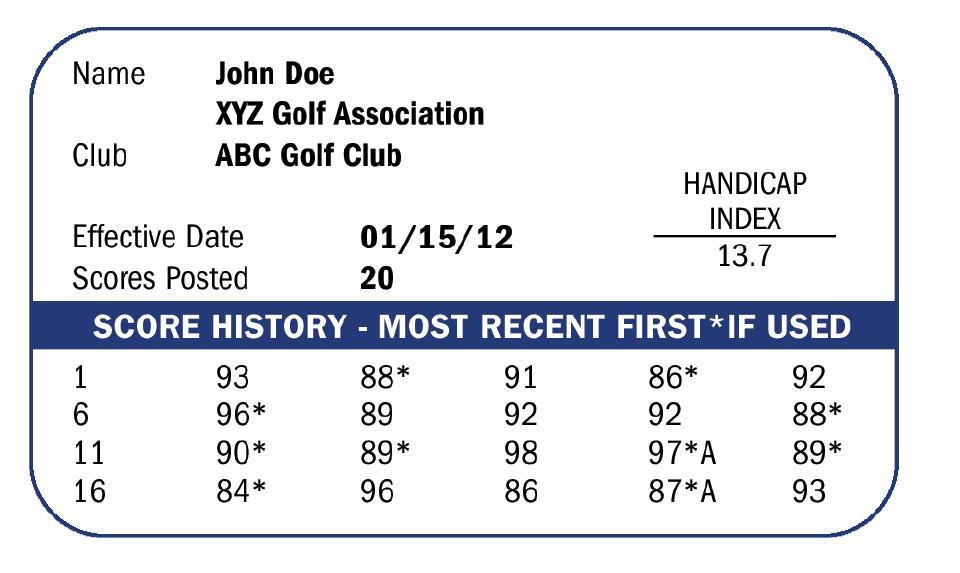Understanding the Influence of Golf Handicaps on Performance Dynamics
In competitive sports, the concept of handicapping is crucial for ensuring fair competition among players with varying skill levels. Golf, known for its blend of skill, strategy, and mental fortitude, utilizes a handicap system to create a level playing field. This article explores how golf handicaps significantly affect performance dynamics and influence both individual gameplay and overall competition results.
The contemporary golf handicap system, especially under the World Golf Handicap System (WHS), offers a standardized measure of a golfer’s potential ability in relation to the difficulty of the course being played. This system includes various elements such as course ratings and slope ratings that together provide an in-depth understanding of a golfer’s performance capabilities. By analyzing how a player’s handicap interacts with course characteristics and competitive environments, we can uncover vital correlations that guide strategic decision-making and set performance expectations on the course.
Moreover, comprehending the implications of handicaps goes beyond mere statistics; it also involves psychological factors as players often wrestle with how their handicaps affect their self-image and confidence levels. In this discussion, we will examine the multifaceted nature of golf handicaps—how they shape gameplay strategies, motivate players, and enhance overall enjoyment in golfing experiences.
The Role of Golf Handicaps in Skill Assessment
Golf handicaps are essential tools for evaluating player skills through standardized metrics that ensure equitable competition among golfers. By calculating their handicap index based on recent scores across various courses with differing difficulties, golfers can assess not only their current abilities but also identify areas needing advancement. This numerical depiction of ability allows golfers to compare their performance against one another and plays a crucial role in informing strategic decisions related to course selection and play style.
Furthermore, these handicaps assist players in making informed decisions about which courses to tackle based on their skill levels. A well-calibrated handicap helps golfers select challenges that are appropriate without being overly daunting—allowing them to build confidence or refine specific skills during practice rounds. Understanding the fundamentals, such as course ratings—reflecting the difficulty of a specific course—and slope ratings—measuring the difficulty of acquiring the course based on the player’s skill level—further enrich this evaluation process.
The significance extends beyond initial assessments; golf handicaps play an integral role in tracking progress over time. Players can monitor trends within their indices to set achievable goals while fostering accountability regarding personal strengths and weaknesses—ultimately contributing to holistic player progress within the sport.
Course Characteristics Impacting handicap strategies
The relationship between golf course features and player handicaps is vital for shaping strategic gameplay approaches. Courses vary widely—with different green conditions, hazards present at various locations—and these factors necessitate tactical adjustments depending on each player’s skill level.
A golfer with a higher handicap may need to adopt more conservative strategies focused on accuracy rather than risk-taking when faced with challenging holes or notable obstacles requiring precise shot placement.
- Distance & Layout: Longer holes may favor lower-handicap players who excel at driving distances while higher-handicap golfers might perform better on shorter technical layouts.
- Hazard Placement: Knowledge about hazard types allows players to adjust tactics accordingly by choosing safer routes that improve scoring chances.
- Green Speed: Faster greens pose challenges especially for those with higher handicaps; recognizing this enables adjustments during approach shots or putting strategies.
| Course Feature | Impact on Low Handicap (<10) | Impact on High Handicap (>20) |
|---|---|---|
| hazard frequency | Tactical avoidance enhances scoring opportunities. | Presents increased risk leading perhaps to penalty strokes. |
| Slope Rating | Aids advanced management techniques throughout playtime. | Might struggle navigating complex layouts effectively. |
Adaptive course Selection Based On Handicapping assessments
A golfer’s handicap serves as an invaluable resource when selecting suitable courses tailored specifically towards individual abilities/preferences. Understanding how handicaps are calculated—including the influence of Course Rating and Slope Rating—becomes vital for players seeking to optimize their game. Choosing appropriate venues requires understanding not just difficulty but also unique characteristics like terrain layout or hazards present. By considering these aspects carefully before heading out onto any given green, players can optimize both enjoyment & performance during rounds played!
Strategizing Shot Execution: Leveraging Handicapping Insights For Optimal Performance Outcomes!
An effective grasp over one’s own golfing capabilities through proper utilization ensures improved shot execution across all facets!
By assessing strengths/weaknesses via calculated indices, golfers gain insights into tailoring game plans around personal advantages while minimizing risks associated from poor choices made under pressure situations!
For instance: A high-hander might opt conservatively when facing tricky holes thus reducing chances incurred penalties due missed shots altogether!
Evaluating Performance Outcomes: The Connection Between Handics And Game Improvement Over Time!
The intricate relationship between established benchmarks (handics) versus actual performances reveals much about growth trajectories experienced by individuals pursuing excellence within this sport!
Regularly updating one’s index promotes cycles where assessment leads directly into adaptations necessary ensuring continuous development occurs consistently throughout journeys undertaken!
Lastly, analyzing outcomes through lenses provided by handics facilitates deeper understandings surrounding progressions made over time allowing creation of personalized matrices highlighting growth patterns alongside areas needing attention moving forward!
Ultimately viewing journeys taken via analytical perspectives transforms participants from mere competitors into strategically informed athletes enriching experiences enjoyed along the way!
The Conclusion: Embracing Complexity Within The Sport Of Golf Through Understanding Its Mechanics!
Exploring intricacies surrounding handics reveals multifaceted relationships transcending simple statistical adjustments alone!
Grasping nuances embedded within systems empowers individuals not only to clarify capabilities but appreciate underlying mechanics governing games themselves too!
This examination illustrates calibrated handics serve powerful tools fostering meaningful competitions nonetheless skill levels involved ultimately enhancing communal experiences shared amongst enthusiasts alike!
As participants leverage insights gained navigate challenges presented effectively they elevate overall enjoyment derived from engaging fully immersed activities offered up by this beloved pastime called “Golf”!

Unlocking the Secrets of Golf Handicaps: How They Transform Performance and Elevate Competition
meta Title
Unlocking Golf Handicaps: Boost Your Game and Competition
Meta Description
Explore the vital role of golf handicaps in enhancing player performance, leveling competitions, and optimizing your game strategy with practical tips and insights.
understanding Golf Handicaps
Golf handicaps are numerical indicators representing a player’s skill level, establishing a fair competition among players of varying abilities. By accurately understanding your golf handicap, you can unlock your potential and maximize your performance on the course.
What Is a Golf Handicap?
A golf handicap is calculated based on a player’s previous performances, allowing golfers to compete fairly irrespective of their skill levels. It gives a measure of how many strokes above or below par a player is highly likely to score.
Key Components of a Golf Handicap:
- Gross Score: The total number of strokes taken during a round.
- Course Rating: An evaluation of the difficulty of a course.
- Slope Rating: A measure of the difficulty of a course for a bogey golfer compared to a scratch golfer.
The Calculation process
The golf handicap formula can be summarized as follows:
- Calculate the Adjusted Gross Score (AGS):
– AGS = Gross Score – Any Maximum per-Hole Score (if applicable)
- Calculate the Differential:
- Differential = (AGS – Course Rating) × 113 ÷ Slope Rating
- Determine the Handicap Index:
- Handicap Index = Average of the lowest differentials multiplied by a specific factor (e.g., 0.96).
Example of Handicap Calculation
| Player’s Gross Score | Course Rating | Slope Rating | Adjusted Gross Score | Differential | Handicap Index |
|———————-|—————|————–|———————-|————–|—————-|
| 90 | 72 | 130 | 90 | 14.51 | 14.51 |
Benefits of Understanding Your Golf Handicap
Leveling the Playing Field
Golf handicaps enable players of different skill levels to compete with one another. By adjusting scores based on handicaps, even beginners can enjoy challenges against more seasoned players.
Improving Performance
Understanding your handicap provides insight into your strengths and weaknesses, allowing you to focus on areas needing improvement.
- Identify Weak Spots:
- Analyze your scores to determine which aspects of your game require more attention.
- Strategic Course Selection:
– Choose courses that align with your strengths while challenging your weaknesses.
Maximizing Enjoyment
Golf is not just about competition; it’s also about enjoyment. Knowing your handicap helps in setting realistic expectations for your gameplay, fostering a more enjoyable experience.
Practical Tips for Managing Your Golf Handicap
Track Your Scores Regularly
Keeping a scorecard helps you stay updated with your golf handicap and enables you to identify trends in your performance. Use apps or customary scorecards.
Play Different Courses
Exposure to varied courses helps you understand your performance across different conditions, enhancing your adaptability and sharpening your skills. Experiment with various terrain types and weather conditions.
Engage in Regular Practice
Regular practice sessions focusing on driving, putting, and short games can substantially improve your overall score.
Participate in Competitions
Engaging in local tournaments can provide valuable feedback on your handicap and performance level. Tactical competitions allow you to gauge your skills against others.
Case Studies: Real-World Benefits of Handicaps
Case Study 1: The Novice Golfer
Player Profile: John, a beginner with a golf handicap of 30.
Findings:
- John utilized his handicap to join mixed competitions, fostering a sense of community.
- Weekly practice sessions improved his focus, leading to a reduced handicap over six months.
Case Study 2: The Seasoned Player
Player Profile: Linda, an experienced golfer with a handicap of 10.
Findings:
- Linda used her handicap to selectively choose courses that suited her play style and terrain preferences.
- An in-depth analysis of her performance helped her identify a weakness in putting, addressing it through specialized practice. Furthermore, understanding the relationship between her handicap and course difficulty allowed her to make more informed choices during competitions.
Elevating Competition through Handicaps
Creating Fair and Competitive Play
Handicaps transform golf into a more inclusive and competitive sport. Players competing with a variety of handicaps contribute to unique and engaging rounds of golf, making the game enjoyable for everyone involved.
The Role of Technology in Managing Handicaps
Modern golf apps are revolutionizing the way players track and manage their handicaps. Many apps provide real-time data, comprehensive analytics, and tips for improving specific aspects of your game. Additionally, advanced analytic tools, such as Arccos, utilize sophisticated data analytics to gather insights on player performance. Through the collection of metrics related to ball flight, shot dispersion, and course management, players gain valuable feedback that informs their gameplay strategies.
Conclusion
Understanding and leveraging your golf handicap can significantly enhance your performance and competitiveness on the course. Embracing the intricacies of handicaps aids in fostering a love for the game while enabling growth as a player.
additional insights on Golf Handicaps
Golf handicaps serve as a fundamental framework for evaluating and enhancing player performance across varying skill levels. By quantitatively assessing a golfer’s abilities relative to the difficulty of a given course, handicaps create a more equitable competitive environment and promote inclusive gameplay. This analytical approach integrates various factors, such as course ratings and individual performance metrics, thereby facilitating a nuanced understanding of skill disparities. Through examining the intricacies of the handicap system, golfers can better identify their strengths and weaknesses, allowing them to make strategic decisions in course selection and shot execution. Furthermore, this analysis empowers players to engage with their skill advancement in a more informed manner, ultimately increasing both their performance and enjoyment of the sport. The implications of this understanding extend beyond personal improvement, contributing to a more balanced and competitive landscape within the golfing community.
By focusing on the technical details and strategies concerning golf handicaps, you can optimize your gameplay, elevate competition, and deepen your enjoyment of the sport. Get ready to unlock your full golfing potential!





